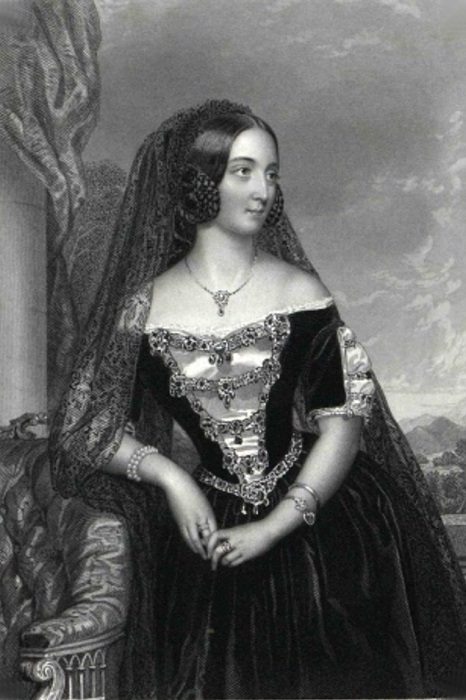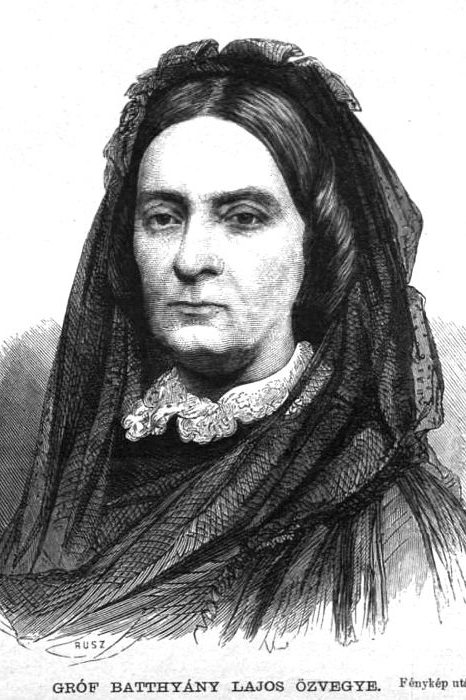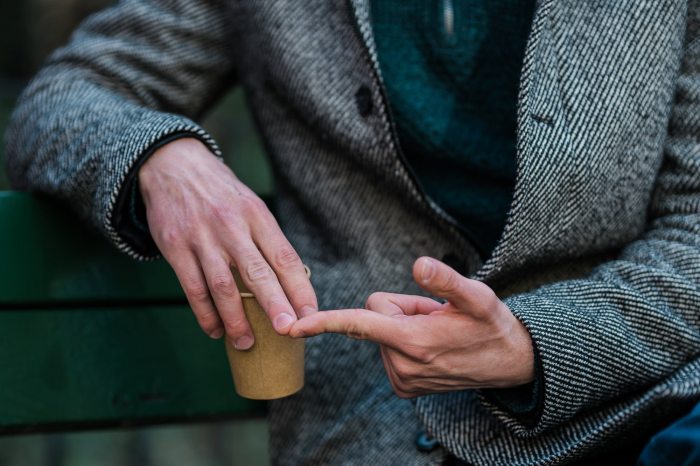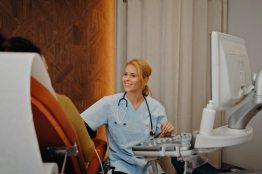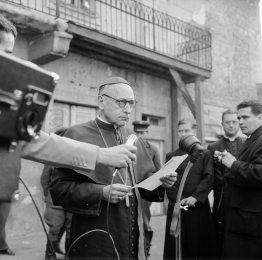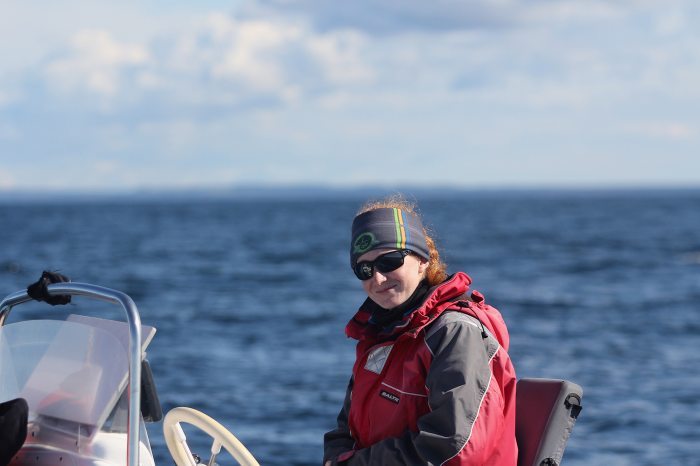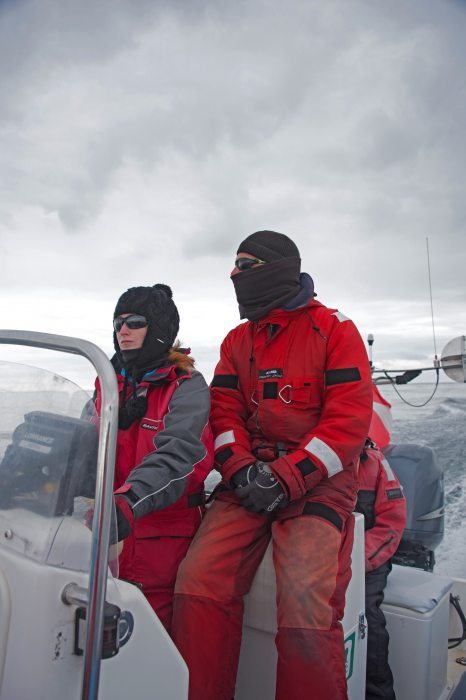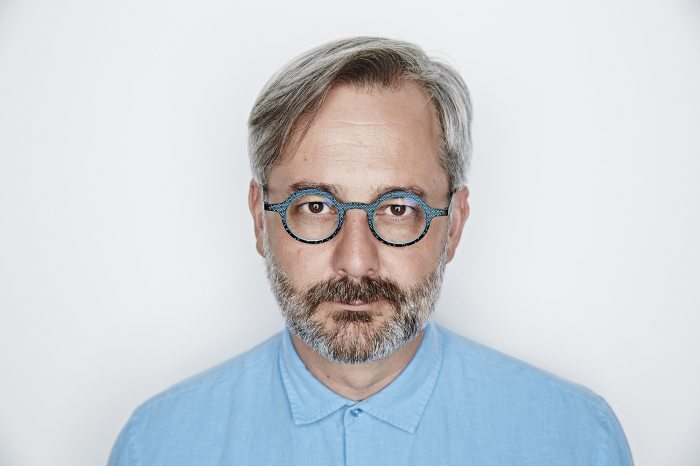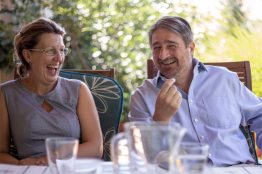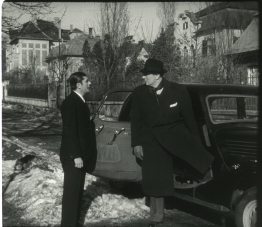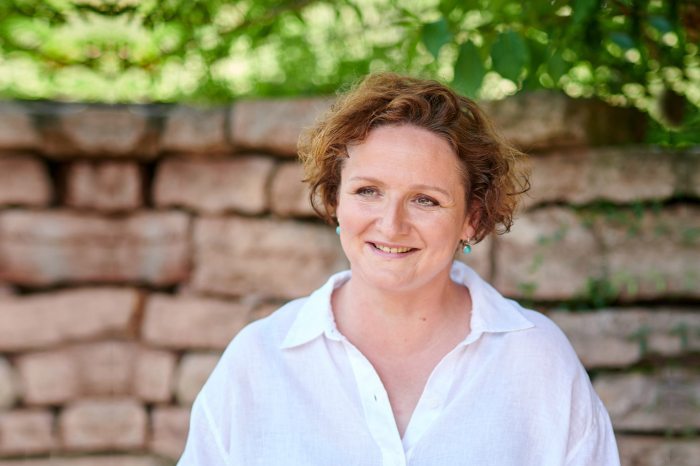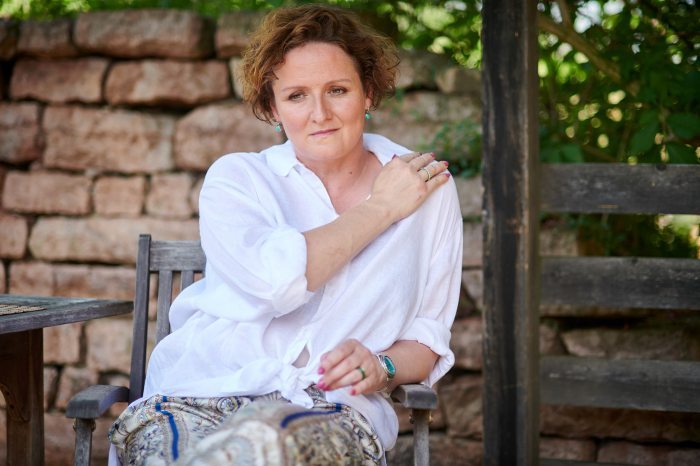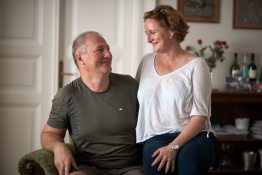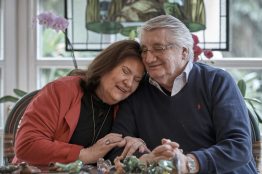The most honoured daughter of the country - Countess Antonia Zichy, wife of Lajos Batthyány

The consort of the martyred Prime Minister, Count Lajos Batthyány, executed on 6 October 1849, was not only a faithful wife but also an inspiring intellectual companion in politics. We talked to historian Zsolt Hernády about the life of Countess Antónia Zichy.
– The wife of the first Hungarian prime minister was born into a noble family. What was the intellectual heritage that Count Antonia Zichy brought to her marriage?
- His father, Count Károly Zichy, was an imperial chamberlain and deputy chief bailiff of Vas county. He did a lot of charity work, supported the sick and the poor, introduced the Hungarian administration on his estates and founded a Hungarian school. He had eight children by his wife, Count Antonia Batthyány.
The young Antonia inherited not only wealth from her parents, but also helpfulness, deep religiousness and national commitment. She was nine years old when her mother died, but the young countess kept the words of the will of her mother throughout her life: "it is in the performance of duty that man finds true satisfaction".
- Antonia was a third cousin of Lajos Batthyány. Was theirs a marriage of love, or was it a combination of the customs and constraints of the time?
- It was a fiery, fast-moving love. In December 1833, the seventeen-year-old young girl met her distant relative, third cousin, Count Lajos Batthyány, almost ten years older than her, at a party in Pozsony. Batthyány was on his way to Turkey, but love overrode his journey, and eight days later he proposed to her, and a year later he led her to the altar in St. Martin's Cathedral in Pozsony.
The couple then travelled to Italy, Switzerland, France and Bavaria. In Paris, while Batthyány, a lawyer by training, spent his time listening to prosecutions in the French courts, his young wife could not get enough of French fashion, buying everything, admiring the hairstyles, hats, expensive fabrics and artificial flowers, which were still a novelty at the time. In the years that followed, they travelled extensively, travelling all over Europe together. Years later, the imprisoned Batthyány said to his wife, as a farewell, that she should remember him by the first years of their marriage.
-Children were not absent from their lives: one by one, they were born. What do we know about what kind of mother and father they were? What was the parent-child relationship like in a family of the aristocracy at that time?
-They had three daughters, but only two survived to adulthood - Emilia and Ilona, and little Antonia died at the age of two. Their first son, Ákos, also died unexpectedly in 1845 at two months old, a loss that was particularly hard on the father. "Lajos Batthyány wants to go mad, he can't take any action, he doesn't want to hear about anything, he is wallowing on the floor", wrote his friend Count István Széchenyi in his diary. Two years later, Antonia again gave her husband a son. Elemér lived a long life, dying in 1932.
Even if the parent-child relationship was not as intimate as it is today, the wife's letters show that the count and his wife took the upbringing of their children seriously and cared deeply about their fate.
-What was life like for the couple before the 1848 Revolution?
- The family spent most of their time in Ikervár, Vas county, and in the mid-1840s the castle was renovated according to the plans of Miklós Ybl. Mrs Batthyány created a real fairy garden with a beautiful park, special flowers and ponds, as well as musical and literary afternoons and evening balls. Guests stayed here often and with pleasure, enjoying the Count's precious library and his exceptional wine collection.
In the winter, they regularly hosted parties in their rented apartment in Pest, where not only aristocrats attended. They also enjoyed going to the theatre and had a box subscription.
- Great love, fruitful marriage, exemplary social life. Was Antonia Zichy and Lajos Batthyány's relationship so ideal?
- Not quite. We respect our first Prime Minister as a great patriot and an excellent Hungarian, but he was also a fallible man, with mistakes, errors and internal dramas. Many of his contemporaries already knew that the Count had an affair with his sister-in-law, his wife's sister Karolina, wife of Count György Károlyi. His farewell letter to his wife reveals to us the remorse that plagued Batthyány "In these lines I repeat to you the deeply felt expression of my fervent gratitude and admiration for all the treasures of your pure love, which I have never been able to deserve; and as true as it is that I stand at the threshold of death, it is only the knowledge of this sin that I take with me to the grave."
Despite the pain and disappointment of marital infidelity, Antonia remained a loyal companion and protector of the Count, and was , as Batthyány himself put it, "always a good angel" - in times of good fortune and in times of trial.
- How interested was Antonia Zichy in public affairs? How involved was she in her husband's work, and in a male-dominated world, was there any way she could be?
The Countess not only provided him a background in their private life, but also shaped her husband's political views. Her national commitment, her world view and her knowledge of languages (Hungarian, German, French, English) had a great influence on the Count, who spoke Hungarian poorly when they met. According to his contemporaries, his wife encouraged him to take a more active, reformist role.
In 1839 Batthyány began to engage in public politics, and already in his first manifesto he emphasised: “The encouragement of womanhood has been found to be an effective means of arousing patriotism in all endangered nations; that it may assume this glorious role in our country as soon as possible, we shall endeavour.”
In addition to her family duties, the young wife became her husband's political partner, a worthy representative of opposition principles. She was a spectacular advocate of her husband's political views in parliaments as well as in the theatre and at balls. She supported economic initiatives in Hungary, regularly donated to charitable causes, and in the 1940s her salon in Pest became a centre of social life, where Mihály Vörösmarty, for example, often visited.
Together with his sister, the wife of Count György Károlyi, they were also enthusiastic supporters of the Védegylet (Protection Association). They spoke Hungarian, wore Hungarian clothes made in Hungary and danced to Hungarian music at balls. They were adored by the youth, and their personalities amazed even Sándor Petőfi, who disliked aristocrats, calling the countesses "fairy flowers".
According to secret police informers' reports, the two did more to strengthen national feeling than a parliament, because fashion has more power than legal disputes.
-She was the first First Lady in Hungarian history. How did she shape this role, how active was she in that role?
- She did not have much opportunity to appear as a classical First Lady, as the development of the revolution did not allow her to do so. At the same time, her life before Batthyány became Prime Minister and her behaviour after her husband's execution portray her as a virtuous, powerful woman of great influence, who not only offered the warmth of home to a statesman but also shaped our history - she influenced the Count and shaped public opinion with her behaviour and gestures. One thing is for sure, she set the bar high for all the wives of prime ministers to come.
- What did she think of the outcome in January 1849, after her husband was taken prisoner in Austria? Was she aware of the fate of the first prime minister?
-She did her best to prevent the inevitable. She followed her prisoner husband wherever she was allowed to go, writing letters of comfort and encouragement and praying for a better fate for them. She tried her best to plead for an appeal for pardon, but she could not help.
- It is true that to avoid the humiliation of hanging, she herself brought that particular dagger into the prison?
-Yes. At the Count's request, she carried to the cell the dagger with which her husband wounded his neck the following night to avoid the humiliation of hanging. We can only imagine the agony the wife went through fearing that her husband might commit suicide with the instrument she had given him. The widow was to be prosecuted, but it was not successfully proven that she had smuggled the dagger in. In his last letter, Batthyány, in an attempt to save his wife, cast suspicion on himself saying: 'I have long carried a rescue instrument'.
– What happened to the widow and her family after that fatal day of 6 October?
- Batthyány's property was also confiscated, so her only legacy was her husband's letter of farewell. Mrs Batthyány and her children moved abroad to escape the harassment, their livelihood being provided for by the considerable Zichy fortune. She first went to Bavaria to stay with her sister-in-law, then to Paris, and finally settled near Zurich.
The Austrian secret police kept a constant watch on her, as her house was regularly visited by the leading figures of the Hungarian emigration, most prominently Count László Teleki. The Countess did not interfere in the politics of the emigration, but she regularly helped impoverished fugitives.
"Although we live abroad, we always ponder over our sad memories in our sweet homeland," she wrote about her feelings in a letter.
She moved home in 1856 because she wanted to marry her children at home, and she managed to marry her daughters to descendants of Hungarian families, and their weddings were national events. She bought a small castle in Dáka, where prominent public figures often visited 'the most honoured daughter of the country'.
-What was her behaviour like in these difficult times?
- First of all, she insisted on her husband's will and did not ask for anything back from the Austrian state. Bearing the weight of her widowhood, she was respected and loved not only for her loyalty to her husband but also for her own example, charity and patriotism. Together with János Damjanich's widow, Emilia Csernovich, she founded the Hungarian Housekeepers’ Association. Together with the wives of the martyrs of Arad, she had a requiem said on 6 October each year.
Wherever she appeared, it was considered a protest against authoritarianism, and the widow of the martyred prime minister was often cheered.
An important event was the reburial of her husband in 1870, where she was finally able to pay her last respects to his body, which had been hidden in the Franciscan crypt until then. She wore a black mourning dress for the rest of her life, and signed her letters "Widow of Count Lajos Batthyány".
-Antonia Zichy survived the Compromise by eleven years. How did she relate to the new era? Can one whose husband has been executed compromise with the ones in power?
- The Countess did not agree with the Compromise: 'Hungary is needed for the monarchy to exist, it is true, but Hungary can live without Austria, that is my conviction. We have the strength, Austria is the rotten body, and if we lean on it, we will fall down, too," she wrote. On the eve of the coronation, hers was the only house in Pest whose windows were not lightened up.
The political atmosphere of dualism was no longer her world, since Franz Joseph, the tyrant, became king of the country: 'my sad voice is not welcome, for it sounds like a reproach'. In the remaining years of her life, she lived in seclusion, caring for her children and grandchildren and doing much charity work. She died on 29 September 1888.
In accordance with her wishes, as written in her will, she was buried beside her husband and the letter of farewell he had left her was placed on her heart.
